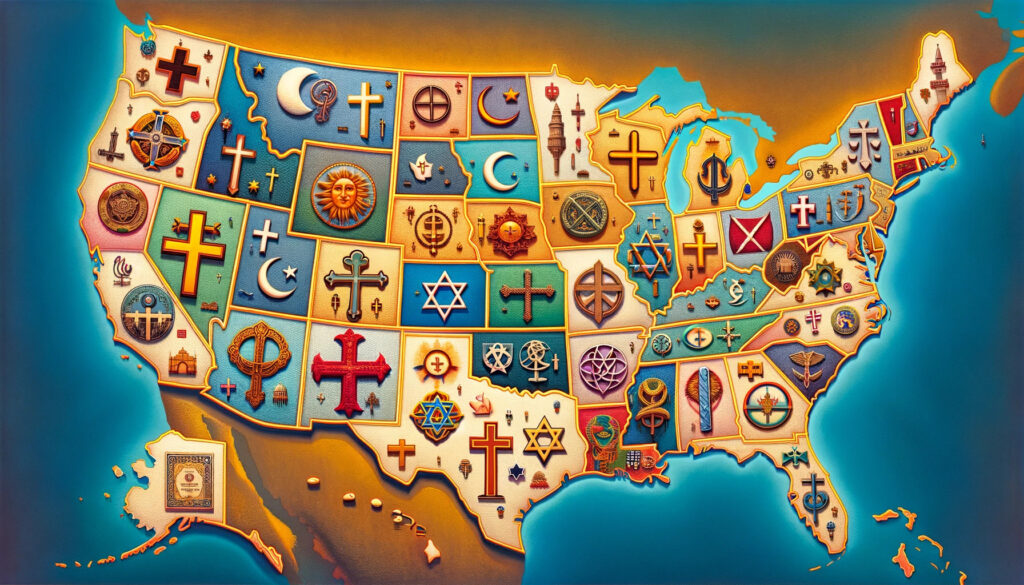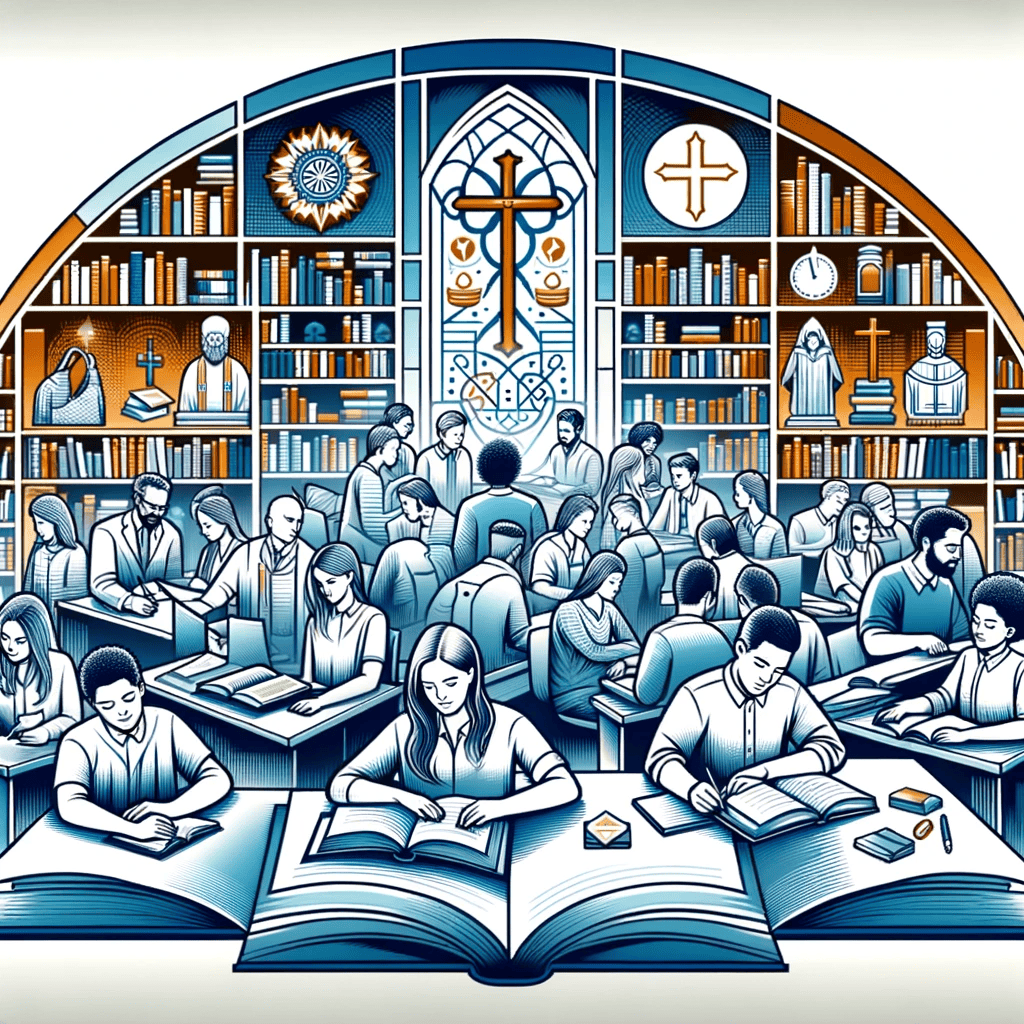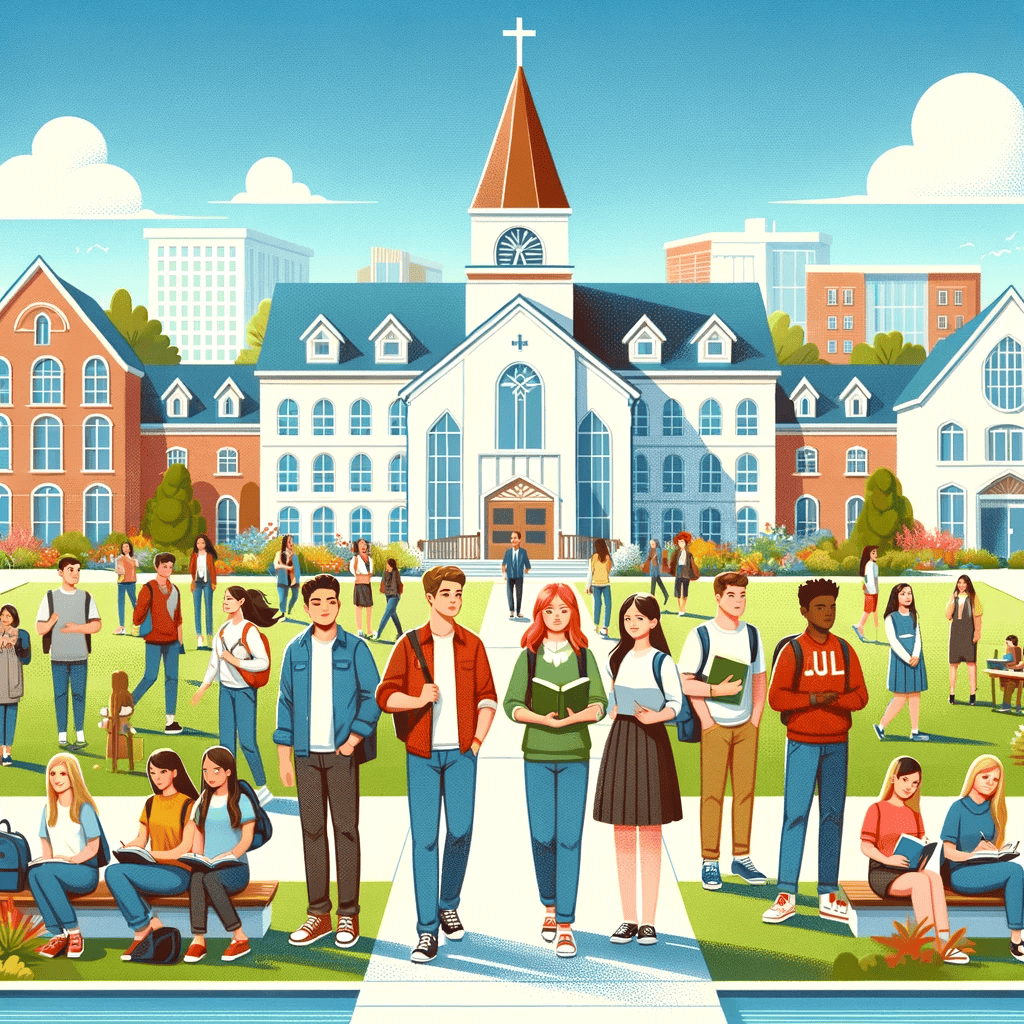The Ethos and Essence of Religious Schools
 Religious schools, also known as faith schools, are educational institutions that integrate religion within their curriculum. They offer a unique blend of core classes and religious instruction, providing a well-rounded education to their students.
Religious schools, also known as faith schools, are educational institutions that integrate religion within their curriculum. They offer a unique blend of core classes and religious instruction, providing a well-rounded education to their students.
These types of schools exist within many different religious traditions, including but not limited to Catholic, Islamic, Jewish and Protestant education systems. Notably, religious activities form a significant part of the school day in these institutions.
This paves the way for students to experience personal growth alongside academic advancement. The role of religion in these schools transcends beyond mere incorporation into the syllabus; it permeates various aspects such as disciplinary rules, dress codes and even extracurricular activities.
It contributes fundamentally towards fostering a strong sense of community among students and staff alike. At their best, these venues for learning promote an environment where faith becomes an integral part of everyday life rather than being relegated as just another subject to be studied.
It is crucial not to mistake smaller class sizes or personalized teaching methods often prevalent in religious schools as their primary distinguishing features from government or state schools. Although such factors do enhance the learning experience significantly, it is the incorporation of specific religious views into teaching philosophy that sets them apart.
*Explore Faith on View’s Christian College Rankings*
The Imperative Role & Relevance of Religious Education
In our modern society where secularism is often celebrated over spiritualism, discussing the importance and relevance of religious schools might seem counter-intuitive at first glance. However, one must remember that while public schools are expectedly neutral with respect to promoting any particular faith due to First Amendment rights in many regions globally – private matter like one’s choice for schooling can be guided by personal beliefs. One should note that parents choose faith-based education for various reasons revolving around their child’s holistic development.
Among the main reasons is their desire for their child to receive an education consistent with their family’s religious beliefs. They often believe that faith-based education is the best way to inculcate not only academic excellence but also moral and ethical values.
Religious schools are also often sought after for the close-knit community they nurture. Such environments arguably provide a secure, supportive setting conducive to learning and personal development.
Additionally, having faith as a common thread among students makes them more likely to respect each other’s values, promoting unity and tolerance. Conclusively, religious educational institutions continue to play an essential role in our diverse society.
They offer parents an alternative educational pathway for their children that aligns with their spiritual beliefs while ensuring academic rigor. It’s this ongoing appeal that underlines the importance of examining the various pros and cons associated with religious schooling.
Demystifying Religious Schools: More Than Just Faith
Religious schools, often termed as faith-based educational institutions, are defined by their incorporation of religious teachings into a standard academic curriculum. These schools are typically affiliated with a particular religion and aim to instill its moral values within the student body. There exist diverse types of religious schools, reflecting the myriad religions across the globe.
For instance, Christian schools cater predominantly to Christian children whose parents seek an education that aligns with their beliefs. Catholic schools are a subset within these, associated strictly with Catholic education.
Other denominations such as Protestant, Evangelical, or non-denominational Christian also have corresponding schools. Likewise, there are Jewish, Islamic, Buddhist and Hindu schools among others – each offering a unique blend of secular and religious instruction tailored to match their respective doctrines.
Regardless of denomination or faith orientation, however, these institutions share the common characteristic of incorporating spiritual teachings into core classes alongside typical academic subjects. Certain religious schools mandate a school uniform while others do not; some might focus more heavily on scripture study than others; how ever every religious school has at its heart a mission to provide an environment where faith can be explored and expressed freely in conjunction with academic growth.
The Evolutionary Tale: From Monasteries to Modern Classrooms
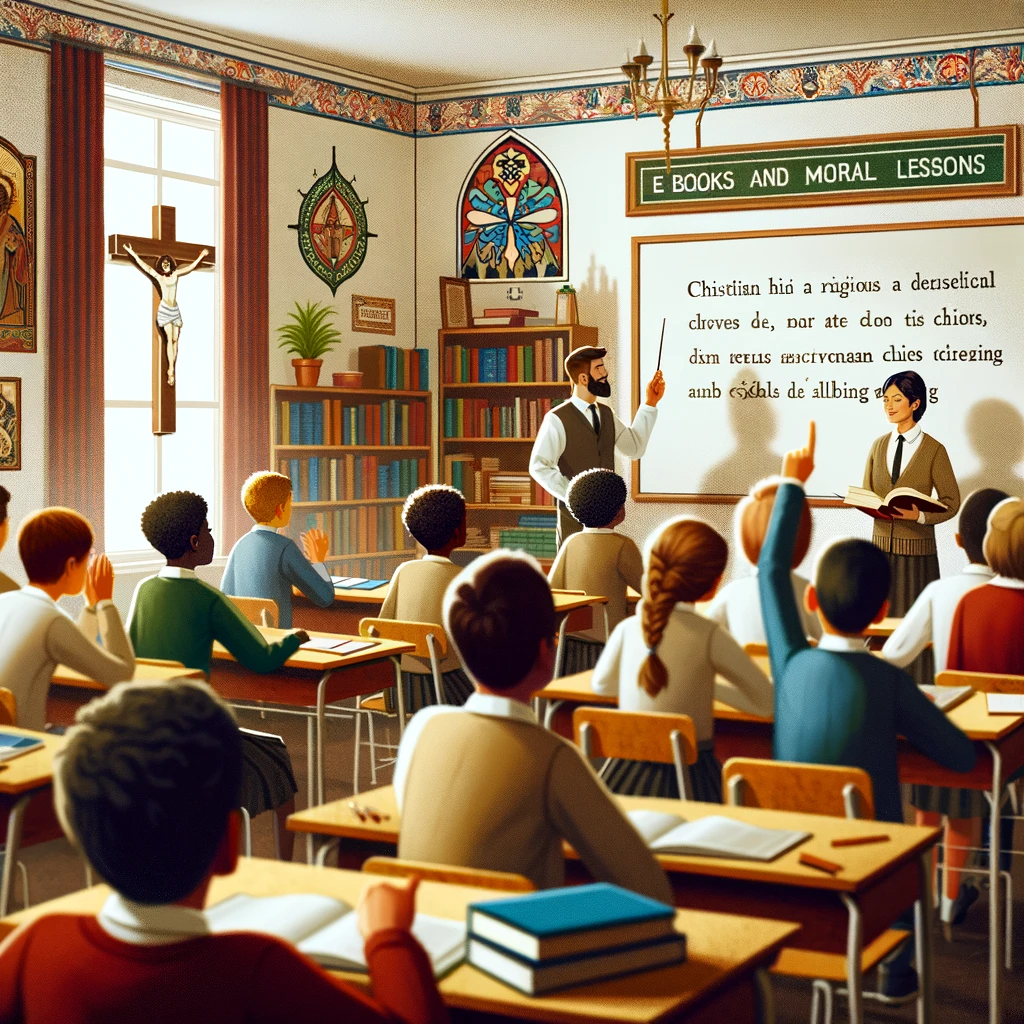 The roots of religious schooling can be traced back centuries when most early forms of education were provided by religious institutions like monasteries and madrassahs. Historically speaking, many primary schools were initially established by churches or other religious entities before government-run public education became widespread. The role of religion in early education was paramount – it was essentially seen as a breeding ground for young people to learn about both secular knowledge and spiritual wisdom.
The roots of religious schooling can be traced back centuries when most early forms of education were provided by religious institutions like monasteries and madrassahs. Historically speaking, many primary schools were initially established by churches or other religious entities before government-run public education became widespread. The role of religion in early education was paramount – it was essentially seen as a breeding ground for young people to learn about both secular knowledge and spiritual wisdom.
In recent centuries though, we have witnessed an evolution in terms of structure and approach. While religious schools have maintained their core ethos of imparting religious instruction, there has been an increased emphasis on delivering comprehensive, high-quality secular education akin to that provided by public or private non-religious schools.
This evolution was spurred by the recognition that young people required balanced, well-rounded learning experiences to successfully navigate the complexities of the modern world. This transition has not always been smooth.
Challenges such as maintaining the balance between secular education and religious teachings, tackling questions of inclusivity and pluralism, and dealing with various socio-political pressures have been persistent. Yet despite these hurdles, religious schools have persevered and continue to play a significant role in global education.
A Comparative Look: Religious Schools vs Others
Comparatively speaking, the key difference between religious and non-religious (public or private) schools lies in their respective approaches towards values-based education and the role of moral teachings in everyday learning. Public universities or government schools are mandated to maintain a neutral stance on matters of faith – they cannot promote any particular religion within their curriculum.
In contrast, religious schools integrate moral values from specific faith traditions into core classes alongside regular academic subjects. Moreover, while most public or private non-religious high school students may study about different religions as part of social studies or humanities courses from an objective standpoint; students in religious schools receive instruction within a framework informed by their particular faith tradition.
This can be seen both as an advantage—providing a strong foundation for personal spiritual growth—and a limitation—potentially restricting exposure to different perspectives. It is also important to note that choice plays a significant role here – Christian parents may choose Christian or Catholic schooling because they believe it is the best way to equip their children with spiritual knowledge alongside academic prowess.
Similarly, parents from other faiths may choose corresponding religious institutions for similar reasons. Therefore comparing them isn’t about determining which is superior, but understanding how they cater to different needs and preferences.
 The Virtues of Values: Moral and Ethical Education in Religious Schools
The Virtues of Values: Moral and Ethical Education in Religious Schools
Religious schools have long been recognized for their proactive role in fostering moral values, a vital component of holistic personal development. By incorporating moral education into the curriculum, these institutions present students with a practical framework for differentiating right from wrong. This is not solely through abstract philosophical dialogue but through tangible illustrations and real-life situations.
Take, for example, a Catholic education. Here, students are taught to prioritize virtues such as humility, selflessness, and compassion.
These teachings are reinforced by case studies of saints and notable figures who demonstrated exemplary moral conduct. As such, religious schools do not merely inform; they inspire.
Indeed, this emphasis on morality is not exclusive to any particular faith. Across different cultures and religious practices – be it Christian schools or Islamic madrasas – one can observe the propagation of ethical principles as an integral part of their pedagogical approach.
Obedience Without Oppression: Instilling Discipline and Respect
Discipline forms an important cornerstone in any type of school; however, its assertion often carries a unique resonance within religious institutions. Such schools instill discipline not through autocratic enforcement but by cultivating respect – respect for the self, others around you, and the overarching divine presence. This respect extends beyond individuals to encompass differing ideologies as well; hence providing a protective bulwark against narcissism and intolerance.
It teaches students that while they may adhere to a specific religion with fervor, they must also acknowledge the validity of other belief systems co-existing in our diverse modern society. The inherent discipline within religious teachings often translates into effective classroom management strategies too – promoting academic achievement while maintaining harmonious inter-personal relationships among students.
A Communal Collage: The Strong Sense of Community
A unique feature often noted about private schools with a religious orientation is their ability to foster a strong sense of community. This is largely attributable to the shared beliefs and values that bind students, staff, and parents alike. This sense of common identity extends beyond the school gates, having wider social implications.
Many religious organizations associated with schools conduct communal activities that further strengthen this bond – be it charity drives or interfaith dialogues. The result is a supportive environment where individuals feel an inherent connection with their peers, enabling them to empathize with others’ experiences while feeling secure about expressing their authentic selves.
Excellence as Tradition: Educational Quality in Religious Schools
Turning our gaze towards academic achievement, religious schools often demonstrate commendable performance. Especially faith-based colleges are known for their rigorous academic standards and comprehensive well-rounded education. Smaller class sizes typical of many private schools allow educators to tailor teaching methods to individual students’ needs, enhancing their learning experience.
The tradition of academic excellence in these institutions often starts as early as middle school and extends towards high-ranking public colleges and universities. Moreover, religious schools instill in students a deep-rooted sense of purpose – stemming from the role of religion in daily life – which often acts as powerful motivation for academic dedication and high achievement throughout their journey from public university onwards into professional life.
Cons of Religious Schools
 Limited Diversity Exposure: The Uniformity Quandary
Limited Diversity Exposure: The Uniformity Quandary
Religious schools are typically founded and operated by specific religious communities. This brings about a certain degree of uniformity in belief systems, which can potentially limit students’ exposure to diverse cultures or ideas. In an increasingly globalized world, this homogeneity can be viewed as a deficit.
It’s important for young individuals to understand and respect the variety of belief systems that exist in society. In contrast, public school systems often provide greater cultural diversity due to their wider demographic catchment areas.
Christian schools, Catholic schools, or any other faith-based primary schools, while they integrate religious instruction into their curriculum, may inadvertently isolate learners from pluralistic experiences necessary for their comprehensive growth. Whereas the U.S. Constitution upholds the First Amendment rights to religious freedom and propagation of specific religion; it is equally important that children receive a well-rounded education that acknowledges myriad other religions and cultures around them.
In the context of elementary school and middle schooling years – formative periods where children develop social skills – limited exposure to cultural diversity can have long-lasting effects on their worldview. While uniformity in belief systems may foster solidarity amongst students within faith schools, it might also inadvertently cultivate an undiscovered bias towards religion of the majority leading one into thinking there is just one ‘good thing’.
Potential for Indoctrination: Striking Balance between Faith and Free Thought
One fundamental concern regarding religious schooling is its potential for indoctrination versus nurturing critical thinking skills—an essential aspect of academic excellence. The role of religion is undeniably significant in shaping moral principles; however, it could lead to dogmatism if not balanced with rational skepticism.
Religious teachings imparted at Christian or Catholic schools should aim at enlightening learners rather than enforcing set doctrines strictly. If teaching drifts towards insistence on accepting religious truths without questioning, it runs the risk of stifling creativity and independent thought – abilities that are crucial in the pursuit of academic and personal growth.
While religious instruction is an integral part of faith schools, it should be designed to foster respect for all belief systems rather than promoting the superiority of one. Education within a religious framework will be beneficial if it encourages questions, debates and discussions about faith and its relationship with other aspects of life, thereby promoting a healthy balance between faith and reason.
Costs Involved: The Financial Dimension
Religious schools often require tuition fees that surpass those associated with public schooling. This additional financial burden can limit accessibility for several families despite their inclination towards religious instruction for their children. Though some might argue that the cost is justified by smaller class sizes or perceived higher quality education offered at these institutions – this argument doesn’t address families who value religious education but are constrained financially.
From elementary school to middle school levels, parents might grapple with investing large sums in education versus utilizing public school resources which are funded by government bodies. While cost might not disqualify the relevance or need for these institutions altogether; it’s certainly a significant consideration for most families when choosing between public system schools and private faith-based schools.
Limited Curriculum Choices: Seeking Broad-Based Learning
The curriculum at religious schools is often centered around imparting knowledge related to a specific religion. Consequently, certain subjects may either be omitted or taught from a particular perspective conforming to religious doctrines. On one hand, this focused teaching approach reinforces the learning experience within the confines of that specific religion; on the other hand, it may stymie learners’ opportunities to explore other areas freely.
Parents opting for Catholic or Christian middle schools desire an environment where their children’s academic pursuits align with their family’s spiritual beliefs; yet they also want assurance that their child will receive comprehensive education beyond religious instruction. Herein lies the challenge for religious schools: to offer a curriculum that not only upholds its religious heritage but also empowers learners to thrive in a pluralistic society.
Making knowledge inclusive and expansive is as vital as maintaining the sanctity of religious teachings in these institutions. While faith-based education has its merits, it also presents some challenges that demand thoughtful navigation by educators and parents alike.
Case Studies: Successes and Failures of Religious Schools
The Merits of Moral Education: A Success Story from a Local Catholic School
In recent years, a local catholic school in New York City has gained recognition for its exceptional efforts in the students’ development. As an antithesis to the cons of religion criticism often lobbied at religious schools, this institution integrates moral values teaching with academic learning. In addition to scoring high in statewide assessments, students from this school exhibit commendable character, resilience, and social responsibility.
Extracurricular activities are geared towards fostering empathy and respect for various religions and different faiths. This type of school proves that religious beliefs can be harnessed to prepare students not just for college but also for life.
 A Christian College’s Emphasis on Community Service
A Christian College’s Emphasis on Community Service
A certain Christian college in the Midwest has been lauded for its community service initiatives. The emphasis on serving others as a manifestation of Christian love has been infused into their curriculum.
Students participate in various outreach programs within their locality and beyond, developing an empathetic worldview while gaining real-world experience about socio-economic issues. This great way of combining theoretical teaching of religion with practical application is a testament to the potential benefits that religious schools can offer.
Criticisms Faced by Religious Middle Schools
However, it is important to note that not all outcomes have been positive. In contrast to successes mentioned above is a middle school case where faith-based education faced harsh criticism due to alleged indoctrination over fostering critical thinking skills. A few parents raised concerns about the lack of exposure to different ideas other than those supported by the religion of the majority at school, leading them feel their children were being secluded from broader societal perspectives.
Conclusion
The pros and cons associated with religious schools continue being subjects of rigorous debate. As illustrated by the case studies, religious schools, be it primary schools or catholic high schools, can create spaces that nurture both moral and academic development of students in a manner that draws from the strengths of their religious convictions. However, they also need to be mindful not to foster an environment that stifles critical thinking and cultural diversity.
Ultimately, the choice between government schools or religious institutions should be predicated upon what is best suited to meet each child’s unique needs and aspirations. As our society continues to evolve with a respect for diversity at its core, let’s hope that all types of schools will adapt to foster an inclusive learning environment for all students.

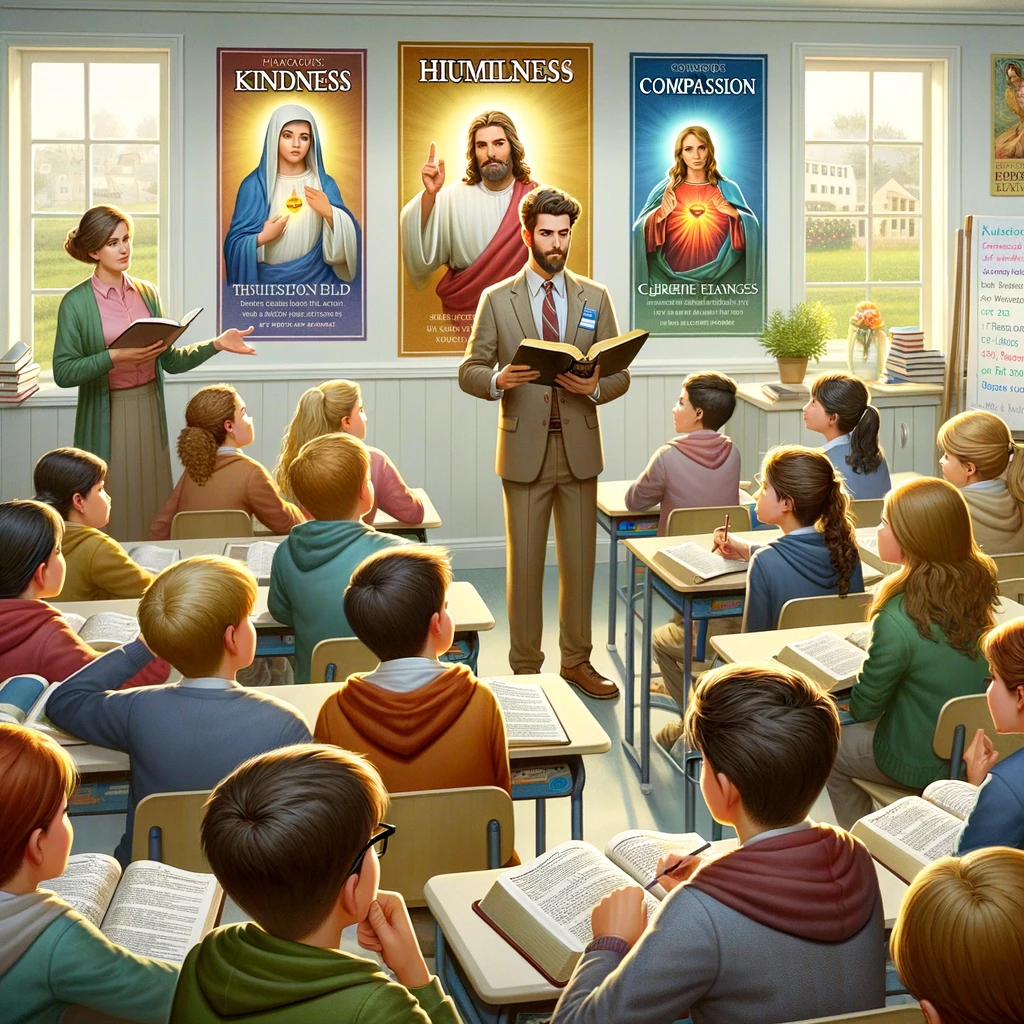 The Virtues of Values: Moral and Ethical Education in Religious Schools
The Virtues of Values: Moral and Ethical Education in Religious Schools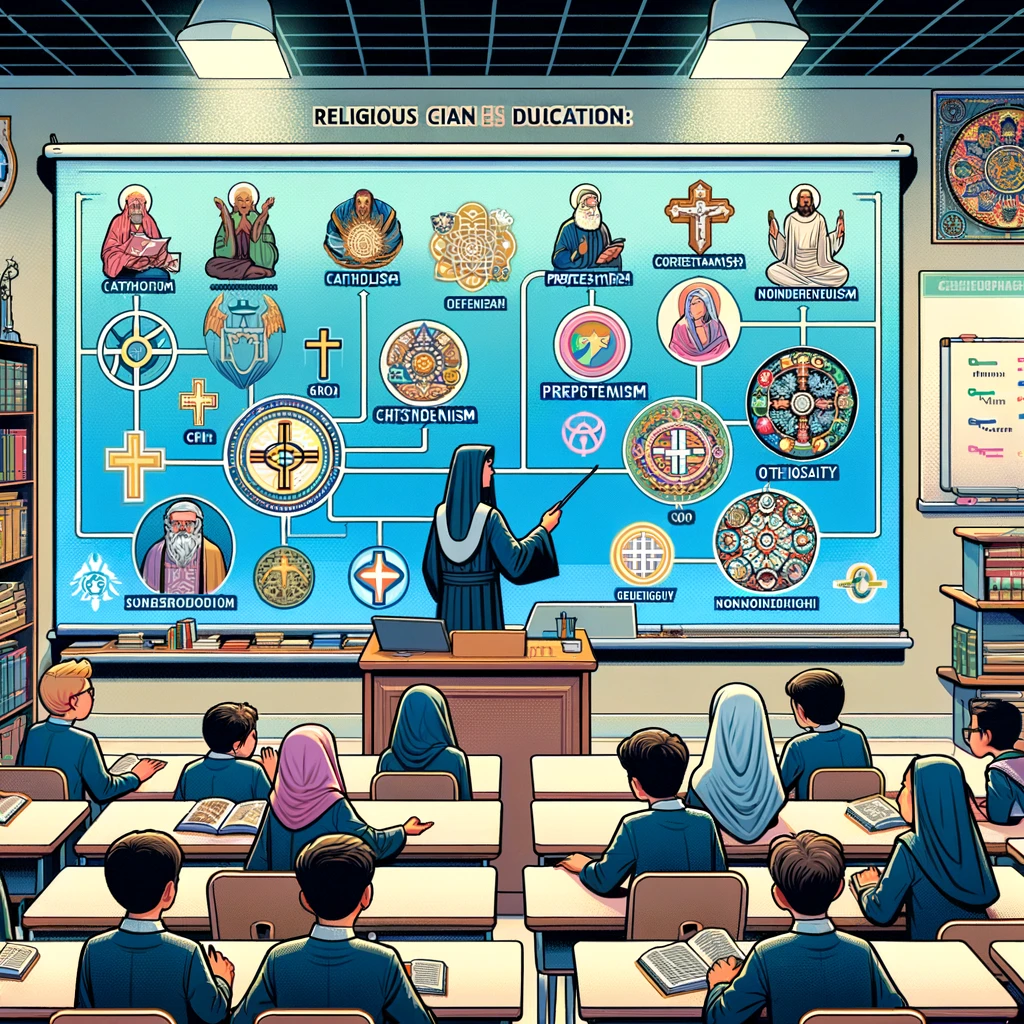 Limited Diversity Exposure: The Uniformity Quandary
Limited Diversity Exposure: The Uniformity Quandary A Christian College’s Emphasis on Community Service
A Christian College’s Emphasis on Community Service